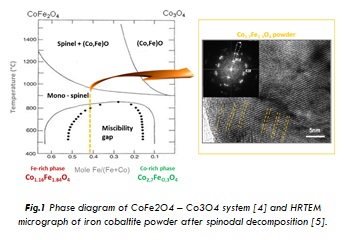
Antoine Barnabe
CIRIMAT – Université de Toulouse III Paul Sabatier, France
Title: MSE-04: Periodic nanostructures obtained by spinodal decomposition at low temperature on Co1.7Fe1.3O4 thin films prepared by radio frequency sputtering
Biography
Biography: Antoine Barnabe
Abstract
Inside a miscibility gap of a phase diagram, a homogeneous solid solution is not stable and progressively broken down into two different phases either by nucleation/growth or spinodal decomposition. Spinodal transformation which only operates in a limited area of the gap, can induce periodic microstructures at a submicronic scale. When they contain at least a magnetic ordered phase, such microstructures could then be a key step in the quest for materials with original properties such as giant magnetoresistance, and/or magnonic crystal which are likely to find new technological applications.
In the CoFe2O4–Co3O4 phase diagram there is a miscibility gap in which spinodal decomposition can lead to regular alternation of ordered magnetic phases made of spinel oxides. This was mainly observed in powders. In the context of potential future applications, it is however necessary to be able to prepare thin films and to induce in them spinodal decomposition at low temperatures. The purpose of this study is devoted to 1) the preparation of Co1.7Fe1.3O4 spinel iron cobaltite thin films on cheap substrate, 2) the structuration at the nanoscale by spinodal transformation at moderate temperatures and 3) the characterization at the nanoscale on the spinodal transformation.
Pure thin films of Co1.7Fe1.3O4 spinel iron cobaltites were prepared by rf sputtering. The two-phase spinels obtained through the spinodal transformation were evidenced after annealing in air at low temperature by XRD/TEM/Raman/Mossbauer/electrical measurements studies. Specific in-plane sections elaborated by FIB were carried out and analyzed by high resolution TEM studies coupled with EELS/EDS/STEM elemental analysis at the atomic scale.
From the present work it can then be concluded that the preparation of Co1.7Fe1.3O4 thin films structured by spinodal transformation could be obtained at temperatures compatible with the use of cheap substrates.

